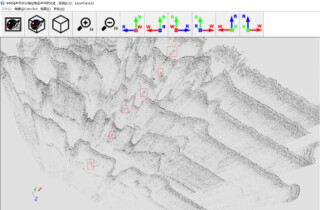

ADCP-based Monitoring System Aids Operations in Darwin Harbour
Located in Australia’s northern Top End, the port of Darwin has long been a strategic gateway to/from Asia. Due to Australia’s increasing trade links with Asian neighbors, the port and facilities have expanded for increased shipping and business.This expansion has seen a renewed focus on the interplay between the port’s operational, maritime, and natural environments. For example, a large tidal range of almost 8 m drives strong and complex currents, having speeds to 2 m/s. At times, maneuvering Panamax and LNG bulk carrierscan be difficult. While aiding such port operations, marine observing systems can also help reveal processes that impact the sustainable use of these areas(e.g., sediment transport, water quality). These data can also provide ground truth and boundary conditions for computer models used in the port’s development projects.
Teledyne Marine products deliver near real-time data to assist mariners navigating strong & complex currents
OVERVIEW
Located in Australia’s northern Top End, the port of Darwin has long been a strategic gateway to/from Asia. Due to Australia’s increasing trade links with Asian neighbors, the port and facilities have expanded for increased shipping and business. This expansion has seen a renewed focus on the interplay between the port’s operational, maritime, and natural environments. For example, a large tidal range of almost 8 m drives strong and complex currents, having speeds to 2 m/s. At times, maneuvering Panamax and LNG bulk carriers can be difficult. While aiding such port operations, marine observing systems can also help reveal processes that impact the sustainable use of these areas (e.g., sediment transport, water quality). These data can also provide ground truth and boundary conditions for computer models used in the port’s development projects.

Darwin is a major multi-modal port serving shipping and cargo markets
SITUATION
Australia’s Integrated Marine Observing System (IMOS) includes a station at the entrance to Darwin Harbour. Information for currents, tides, waves, temperature, water quality parameters (e.g., Chlorophyll-a, turbidity), wind and rainfall are recorded. Updated every 30 minutes, various data summaries are available via the Internet in near real-time. While navigating ships in Darwin Harbour, pilots can use a smartphone to see the data.
As well as supporting safe shipping, these near real-time observations can aid the general public. Examples include recreational activities, improved safety from storm events, protections for public health, and healthy ecosystems. For authorities, these data can also assist in emergency response operations and support.

The seafloor tripod installed by AIMS at the entrance to Port Darwin. It carries a 600 kHz Teledyne RDI ADCP equipped with NEMO waves, Teledyne Benthos ATM916 acoustic modem, and a suite of water quality sensors. The ADCP simultaneously profiles currents and processes directional wave spectra in-situ.
SOLUTION
The marine National Reference Station at Darwin was installed by the Australian Institute of Marine Science (AIMS). Darwin Port Corporation provided an existing navigation buoy to create a hub for the project.

The navigation buoy provided by Darwin Port Corporation hosts metoc and water quality sensors and provides the surface link for sending near real-time data.
On the seabed, about 100 m from the buoy, is a tripod. As well as water quality sensors, it carries a 600 kHz Teledyne RDI ADCP equipped with NEMO waves for in-situ processing. Water motions are measured from 20 m depth. The ADCP simultaneously profiles currents and processes directional wave spectra in-situ. Combining both currents and waves in a single compact package simplifies operations. Using battery power allows the measurement of waves every two hours over a 6-month deployment.
Access to the seabed ADCP’s data is achieved using acoustic telemetry through water to the surface buoy. The link is via a Teledyne Benthos ATM916 acoustic modem. Every thirty minutes, the near-surface modem polls the tripod modem. This interval allows for 6 month deployments when using battery power for the modem.
All transmitted data are published on the AIMS website. They are publicly accessible within 10-30 minutes of leaving the tripod. The web interface provides tools for exploring and plotting the data. Another simpler interface for smart phones delivers relevant readings to mariners.
RESULTS
For some time, this ADCP-based monitoring system has assisted Darwin Port Corporation in different ways. Besides supporting ship handling actions, the ADCP’s data contribute to managing less frequent activities: recurring events like dredging and occasional events like maritime accidents (e.g., ship groundings, oil spills). The data are also valuable for general public uses like recreational boating and trip planning.
Data from the station are expected to feed into other key systems for Port Darwin. One will include accurate modeling and prediction of under keel clearance. This will help in optimizing the sailing window and maximizing the draft for any particular ship. Another is an operational forecast model for Darwin Harbour.

Port Darwin conveys a wide range of exports and provides services for offshore oil and gas rigs.
Do you have questions about this case study?
Get in touch with Teledyne Marine, and they would be happy to answer any questions you have about pricing, suitability, availability, specs, etc.


![3月21日-封面[1].jpg](https://cdn.geo-matching.com/voeE1ywo.jpg?w=320&s=6b3b1a0215d770f8797653e9202a8f52)




